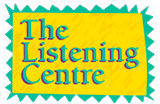What Actually Happens During Treatment at The Listening Centre
The Listening Centre is going into its 40th year of providing listening training services for clients of all ages, based on the work of Dr. Alfred Tomatis, who discovered that receptive and expressive communication, learning ability, social behaviour, self-regulation, activity level, motor function and coordination are all related to the ability to listen.
The Program
The program that The Listening Centre offers begins with an Initial Assessment. At this point, the person is evaluated to determine whether they are a candidate for the listening training program. As well, changes and improvements that would be expected and the length of the program to achieve these goals are assessed. Generally, a program consists of two intensive phases of 2 hours a day for 15 days, with a 4- to 6-week break in between. It may be recommended that the second intensive phase be broken down into 2 to 3 shorter blocks of 5 to 10 days each. Reinforcement “boost” sessions might be recommended as follow-ups.
Each client receives an individually tailored sound program using music or voice through headphones and bone conduction. The sound is modified through electronic filters and gates before being transmitted to the ear in a pulsating way to achieve the training effect. The training is designed to reproduce the different stages of the development of listening from prenatal life to speech and written language.
The first intensive phase is “passive”, working on receptive listening – the first stage of communication. The child can play with other children in the room, draw, paint, play games or even nap. Adults can do puzzles, draw, read magazines, or other non-demanding activities. Concentration on the sound stimulation is not necessary, and it is a relaxing process both for adults and children.
The second intensive phase is “active”, with emphasis on expressive listening – auditory control of the voice. Clients may hum, sing, speak or read into a microphone while their own voice is fed back to their ears once electronically modified. If a child is unable to do structured vocal activities, that is no problem – a microphone is set up to pick up and emphasize vocalization attempts.
Three months after the end of the program, a follow-up review happens to evaluate the progress and to make further recommendations if necessary. In some cases, reinforcement “boosts” may be suggested. Further phone reviews are scheduled for a full year following the end of the program. Questions and feedback are always encouraged!
The daily training sessions take place in the children’s playroom or in the adults’ room with specially trained listening therapists. For younger children with developmental delays, sensory regulation and/or communication disorders such as ASD, we have a wonderful facility to offer - our specially designed multi-sensory playroom. Here, our listening therapists implement a range of sensory integration techniques, because to have communication, language and learning taking place, all our “sensory modalities” need to be in harmony.
In the multi-sensory playroom, for example, the tactile sense may be stimulated playing with hand cream, textured fabrics or soft toys. Mirrors are used to trigger visual-spatial responses, and playing on swings, hammocks, the trampoline or the balance board to music enhances vestibular-proprioceptive responses.
This “sensory diet” contributes to increasing the child’s sense of self, which is at the start of the sense of others, essential to all communication.
 Skip Navigation
Skip Navigation